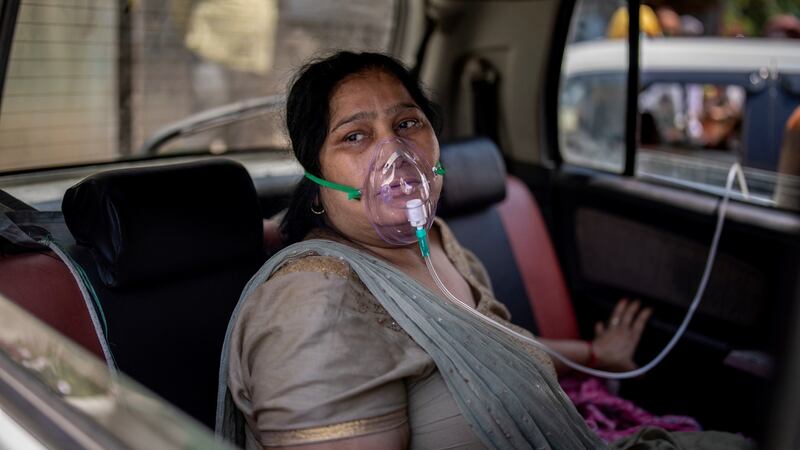Many religious organisations and social groups have surfaced across India to try to ease the medical and humanitarian calamity caused by its second Covid-19 wave. The country recorded a further 357,316 new infections on Wednesday.
In addition to arranging food and essential medicines for tens of thousands of infected people, senior citizens and others under lockdown across India, the voluntary bodies are providing oxygen, shortages of which have led to Covid-19 patients dying of asphyxiation in many hospitals in New Delhi and other towns.
"Oxygen has emerged as the new currency on India's morbid stock exchange," wrote Indian author Arundhati Roy, a Booker Prize winner, recently. She said the "hidden market" for oxygen cylinders was booming.
Sikh volunteers from Khalsa Help International have established a charitable drive-in "oxygen langar" or community facility near New Delhi.

Located at a gurdwara, or Sikh temple, at Indirapuram in Ghaziabad, the langar is open around the clock and offers 25 fully equipped hospital beds where Covid patients can stabilise their oxygen levels free of cost, after hooking up to a pipeline connected to a bank of gas cylinders. People are travelling to the langar from hundreds of kilometres away.
For those unable to get a bed, volunteers ferry oxygen cylinders to their cars in the gurdwara car park and keep them hooked up until their oxygen levels stabilise. “No one should die because of a lack of oxygen,” says facility founder Gurpreet Singh Rummy.
The 42-year-old Sikh says that over the past week the langar has provided free oxygen to some 5,000 people and that its capacity will be enhanced over the next few days, as helpers scour northern and western India for the gas.
“People can stay here until their oxygen levels stabilise and they are fit to travel to find a hospital bed,” says Rummy. If, after leaving, their oxygen levels drop again, they can return for further help, he adds.
Severe shortages
Similar langars have sprung up in other parts of Delhi, where severe oxygen shortages endured on Wednesday in almost all hospitals, more than a fortnight after the alarm over shortages was first sounded.
Numerous other Sikh gurdwaras in Delhi and other Indian cities have been cooking industrial quantities of food and delivering them not only to the virus-afflicted and their families quarantined in their homes, but also to tens of thousands of migrant labourers rendered unemployed and homeless by the pandemic.
The Jahingirpura mosque in Vadodra in western Gujarat state has been converted into a 50-bed makeshift hospital to ease pressure on the city’s medical facilities .
“The situation has compelled us to take the step,” says Irfan Sheikh, one of the mosque’s committee members, adding that they have hired doctors to run the facility, which is also equipped with oxygen cylinders.
Other Indian Muslim groups have launched helpline numbers across India to provide leads to Covid patients about free hospital beds as well as oxygen and medicines.
And Relief Riders, Bangalore’s 200-strong cycling community, has been delivering medicine, rations and other essentials to senior citizens and other vulnerable groups for 16 hours every day until 10pm.
“This is a time we decided to step in and help to keep the elderly who are vulnerable safe,” Riders head Sathya Sankaran told Mirror Now news network.
Logistical bedlam
There appears to be bedlam over which federal ministry or agency is responsible for handling the distribution of vast amounts of medical equipment such as oxygen concentrators, ventilators, virus diagnostic test kits and other related kit, which has been sent to India by more than 15 countries over the past fortnight.
Television news channels on Wednesday reported that complex bureaucratic procedures were delaying the dispersal of this vital equipment, which is languishing in warehouses in and around Delhi.
Many reported that the squabble over distributing the supplies, especially oxygen concentrators, centred on the federal foreign, health and home ministries, and an “empowered group” headed by the transport secretary – but nobody seemed in charge.
No government official on any of thee news channels was able to provide clarity on the issue.





















